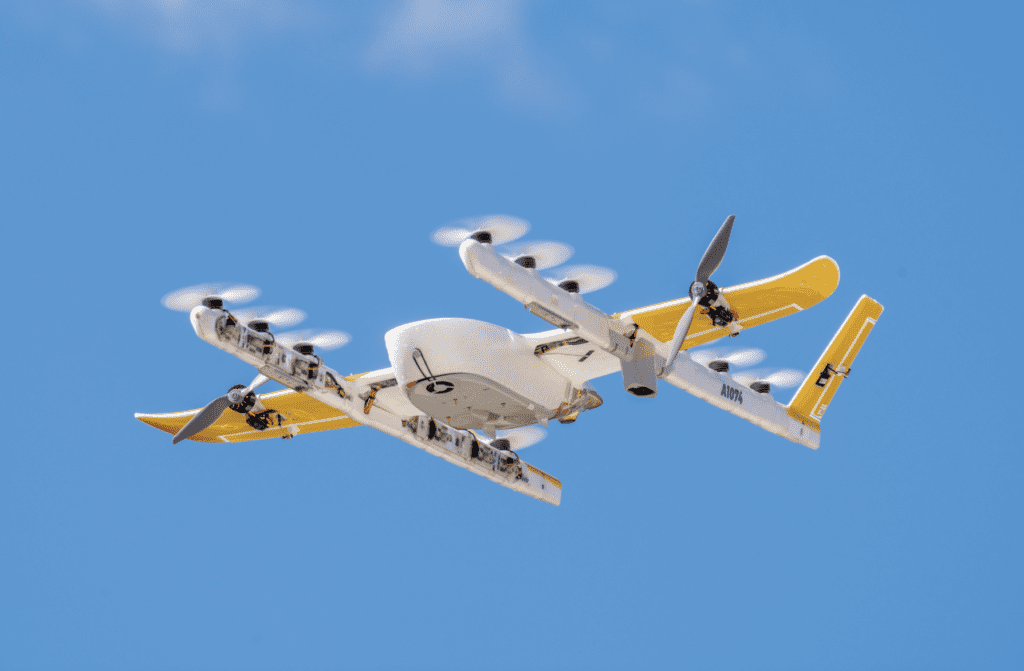
Chair of ASTM International’s F38 Committee on Unmanned Aircraft Systems, Philip Kenul offers insights into today’s regulatory environment for drone operations, including Remote ID. (Photo: Wing)
In spite of rapid developments in drone technology over the last decade, commercial drone operations beyond visual line of sight are still somewhat limited. Ten years ago, many people believed that routine package deliveries by drone were just around the corner. However, the drone industry is perhaps less than five years away from becoming a much more mature industry, according to Phil Kenul, Chair of the F38 Committee on Unmanned Aircraft Systems at ASTM International, a standards development organization.
“I think the industry is starting to build better and more reliable aircraft,” he said, “and the Federal Aviation Administration is supporting those efforts.” He also believes that risks associated with operating drones in urban areas are declining.
The F38 Committee of ASTM, which meets twice a year, addresses issues related to airworthiness, flight operations, and operator qualifications for unmanned aircraft systems (UAS). Kenul has previously served as Rear Admiral, and later Director, of Marine and Aviation Operations Centers for the National Oceanic and Atmospheric Administration (NOAA).
Gaining social acceptance for UAS operations is “going to be a slow crawl,” Kenul remarked. He has observed significant improvements in social acceptance in the past five to ten years, however, and especially in the past few years, people have become more comfortable with the idea of delivery drones flying overhead. “People are excited that they’re actually going to get a product delivered to their house when they need it,” he said, mentioning medical delivery as one of the key applications for UAS that benefits people directly.
Along with DroneUp and Zipline, Kenul said, Alphabet’s subsidiary Wing is one of the key players in the UAS package delivery space. Wing participates in ASTM’s development of standards for UAS traffic management (UTM), along with ANRA Technologies. ANRA’s founder and CEO is also a board member of the Global UTM Association, or GUTMA. Kenul explained that ASTM and GUTMA have an agreement to coordinate activities related to standards for UTM or U-space.
“UTM coordinating aircraft in the airspace may be a risk mitigator for package delivery,” Kenul commented. “I think we’re on the cusp of starting to see more deliveries. The next five years are going to be very critical for seeing how this industry is going to play out.”
To make routine package delivery by drone a reality, there are at least two requirements, said Kenul. The first is airworthiness certification. The second requirement is enabling beyond visual line of sight (BVLOS) operations with detect-and-avoid (DAA) technology—”whether it’s an airborne or onboard DAA technology, or a ground-based DAA technology, a radar system, or a data feed system that catalogues all the cooperating aircraft.”
A UTM system will be necessary in populated areas with a high volume of traffic operating in the airspace. But in rural areas where the risks are lower, it could be possible to accelerate BVLOS capabilities without an established UTM.
Remote identification standards and means of compliance are critical for the UAS industry, Kenul commented. The capability to remotely ID an autonomous vehicle via a “digital license plate” is a requirement for BVLOS operations. “It’s more of a security requirement,” he said. ASTM “has just completed the means of compliance that the FAA is on track to adopt for remote identification.”
Remote ID will enable UAS applications for law enforcement, security agencies, and other groups that “want to be able to identify what’s flying out there,” he added.
Putting standards in place for Remote ID in the U.S. is especially important because manufacturers will be required to include a Remote ID capability in all UAS after September of this year. “One of the highest priorities from the FAA right now is to get Remote ID over the finish line,” Kenul noted.
The FAA released new rules for Remote ID for UAS at the end of 2020 to address concerns about safety and security, while also aiming to advance opportunities for innovation in the UAS industry. The final rule established a new Part 89 in the Code of Federal Regulations’ Title 14. Most of what was included in this final rule became effective in April 2021. As of September 16, 2022, drone manufacturers must maintain compliance with the requirements outlined.
While ASTM’s F38 Committee develops standards around UAS operations, another committee within ASTM—F44—is focused on standards for a range of aircraft types, such as air taxis. According to Kenul, social acceptance for advanced air mobility (AAM) vehicles like air taxis—electric vertical take-off and landing (eVTOL) aircraft—will follow the public’s acceptance of UAS. The regulators of the eVTOL industry are taking the right approach, Kenul believes, by not rushing to allow commercial operations before the vehicles are proven to be safe.
The path to certification for eVTOLs will be similar to that of UAS—and will perhaps take a bit longer, noted Kenul.